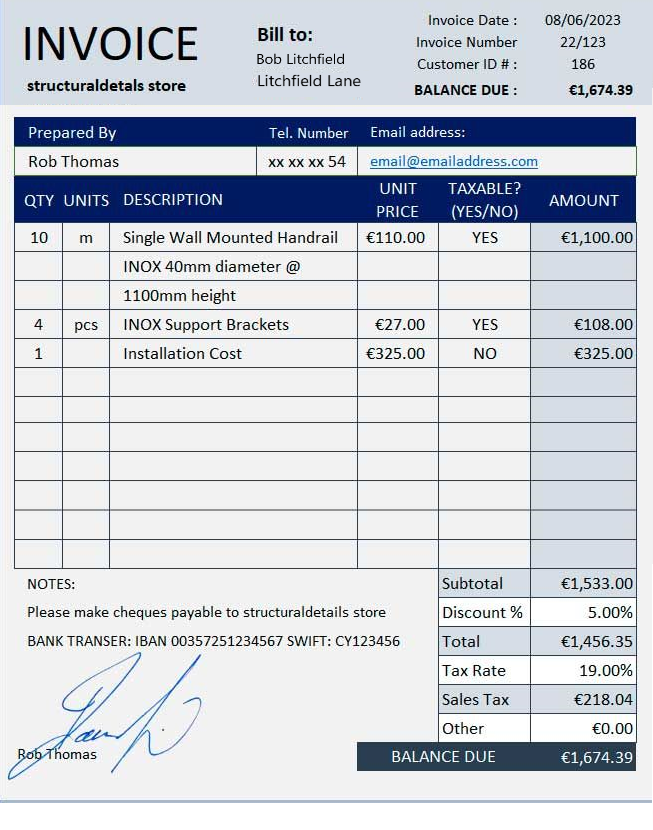Doing business for over 6000 years...
It started with Sumer

Business is not about technology; business is about business.
And business works best when everyone benefits.
The Sumerians enjoyed business even before invented writing and money.
It worked out well. Maybe that is why most of their statues are smiling.
In fact it worked out so well that we still use their systems today.
Technology has changed, business basics not so much

an invoice for the handrail on Bob's stairs is recorded as computer blips

an invoice for delivery of gloves and hosiery to Litchfield manor, 1793, is recorded on paper

an invoice for the handrail on Bob's stairs is recorded as computer blips
but they are all spreadsheets linked in an intuitive virtual database
created by some long-ago genius who invented rows, columns, and totals to build forms and reports
and still used today in businesses based on Microsoft Office or Google Docs
An intuitive virtual database is a manual system, involving a lot of copy and paste, even if using Excel or Google Docs.
Spreadsheets are easy to use, And the exact thing that is so easy about spreadsheets—that anyone can get into them and change things, intentionally or not—makes spreadsheet dangerous, even disasterous, as a base for business records.
The next step requires data to be linked in an explicit RELATIONAL DATABASE so that computers—not managers—do all the work. Data goes in easily and securely, without errors, and complete reports come out with no further involvement of office staff.
This improvement in cost and efficiency allows large corporations to overwhelm their small competitors.
Setting up a relational database program, however, requires detailed and complex rules and algorithms, written by programmers.
IT IS VERY EXPENSIVE!
( except for Sumer )
Hiring IT staff or contracting a software development company to build custom software is incredibly expensive.
Even worse: statistics show that
"31% of software projects are canceled before completion, and 53% exceed their original budgets by 190%. This trend is acknowledged by business and IT executives, with 75% anticipating their software projects will fail. Alarmingly, only 16% of projects are completed on time and within budget."
Big corporations can afford this, or at least have to put up with it, because once they have that software they can crush their competition.
And if they don't have it, they will get crushed.
An obvious reason for so much failure is that the programmers themselves don't actually understand the business. The geniuses behind the business are the managers, the programmers are more like the guys that bake the clay.
Or you could buy an existing solution from a software purveyor.
But why so expensive?
"The winner is a new class of techno-middlemen, hawking leased hardware and subscription-based software solutions to the public and private sectors. The companies developing the technology have raised billions to impose their 'solutions' onto the unwitting public."
You know, ads like
It's not you! It's your POS!—upgrade to WarpDrive!
When they say they want to "help you explore your needs", they mean they are trying to find out enough about your business that they can pull something off the shelf, repackage it to do more or less what your are already doing, and sell it back to you.